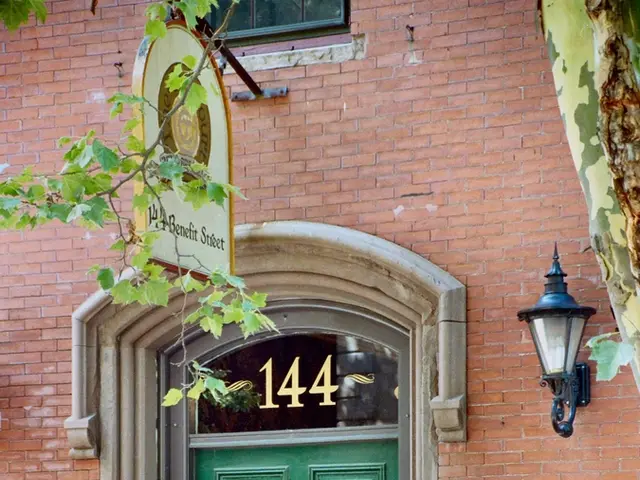Medicare provides coverage for leukemia treatment.
In the fight against leukemia, patients in the United States can take solace in knowing that Medicare provides coverage for many expenses related to diagnosing and treating the disease. However, out-of-pocket costs can still be significant for those undergoing treatment. Here's a breakdown of the key cost components for Medicare Part A, Part B, and Part D in 2025-2026.
Medicare Part A (Hospital Coverage)
With Medicare Part A, patients face a deductible of $1,676 per benefit period, which begins when they are admitted to a hospital and ends after 60 consecutive days out of the hospital. For the first 60 days of hospitalization, there is no coinsurance. From days 61 to 90, the coinsurance is $419 per day. Beyond day 90, higher coinsurance applies, and these costs primarily apply to inpatient hospital stays, which may be part of leukemia treatment, especially if intensive procedures or complications occur.
Medicare Part B (Outpatient and Physician Services)
Under Medicare Part B, the monthly premium is approximately $185 in most cases for 2025, although this can vary based on income. The annual deductible is $257, and coinsurance applies to services after the deductible is met, covering outpatient chemotherapy, doctor visits, and radiation therapy, among other services.
Prescription Drug Costs Under Medicare Part D
Part D is particularly important for leukemia therapies, as many drugs are covered under this plan. The annual deductible for 2025 is up to $590, increasing to $615 in 2026. Coinsurance typically amounts to 25% after the deductible until the out-of-pocket maximum is reached. In 2025, this maximum is approximately $2,000, increasing to $2,100 in 2026. After reaching this, the plan pays 100% of drug costs.
Extra Help Program
For those with limited income and resources, the Extra Help program offers financial assistance with premium, deductible, and coinsurance for Medicare Part D. Eligible patients pay reduced copays, such as $4.90 for generic drugs in 2025.
Acute Leukemia Hospitalizations and Costs
Acute leukemia hospitalizations have average Medicare reimbursement costs ranging from around $101,000 to $147,000, reflecting the high treatment costs associated with hospitalization and procedures. Patients pay deductibles and coinsurances according to Part A and B.
Additional Financial Support Options for Patients
In addition to Medicare, there are other options to help patients manage out-of-pocket costs. Medigap (Medicare Supplement) Plan G covers nearly all out-of-pocket costs except the Part B deductible, providing extensive financial protection for cancer-related treatments. Medigap typically costs over $100/month but is widely accepted by providers, offering flexibility and lowering financial risk.
For at-home prescription drugs, such as oral chemotherapy or targeted therapies, Medicare Part D is essential. The Extra Help program can also subsidize costs for low-income patients. Some states and charities also provide additional support for cancer treatment costs, including transportation and medication assistance.
In conclusion, patients with leukemia could face significant expenses, particularly during hospital stays and high-cost chemotherapy or targeted drug therapies. However, Medigap, Medicare Part D (with potential Extra Help), and other financial assistance programs can help reduce these financial burdens substantially. For treatment cost estimates tailored to specific leukemia treatment types or additional assistance programs beyond Medicare, more detailed information or referral to patient advocacy resources may be necessary.
| Cost Component | 2025 Amount | Notes | |-----------------------------|---------------------|-----------------------------------------------| | Part A Deductible | $1,676 per benefit period | Applies to inpatient hospital stays | | Part A Coinsurance | $0 for first 60 days, then $419/day | For days 61-90 of hospitalization | | Part B Monthly Premium | Approx. $185/month | May vary by income | | Part B Deductible | $257 annually | Annual deductible for outpatient services | | Part B Coinsurance | 20% of Medicare-approved services | After deductible, covers chemo, physician visits | | Part D Deductible | Up to $590 (2025), $615 (2026) | For prescription drugs | | Part D Coinsurance | 25% after deductible | Until out-of-pocket max | | Part D Out-of-pocket Max | $2,000 (2025), $2,100 (2026) | After this, drugs covered 100% | | Medigap Plan G Premiums | >$100/month | Covers most out-of-pocket costs except Part B deductible |
- To help manage out-of-pocket costs for leukemia treatment, patients can consider enrolling in Medigap Plan G, which supplements Medicare Part A and Part B and covers nearly all out-of-pocket costs except the Part B deductible.
- In addition to Medicare, some states and charities offer support for cancer treatment costs, such as transportation and medication assistance, which can be crucial for patients undergoing treatment.
- Different types of leukemia may require specific treatment approaches, resulting in unique treatment costs. For more detailed cost estimates tailored to specific leukemia treatment types, additional resources or patient advocacy may be required.
- Medicaid, a health insurance program for lower-income individuals, provides assistance with medical-conditions like leukemia for eligible patients, reducing their financial burden.
- For patients with limited income and resources, the Extra Help program offers financial assistance with premiums, deductibles, and coinsurances for Medicare Part D, making prescription drug costs more affordable.




